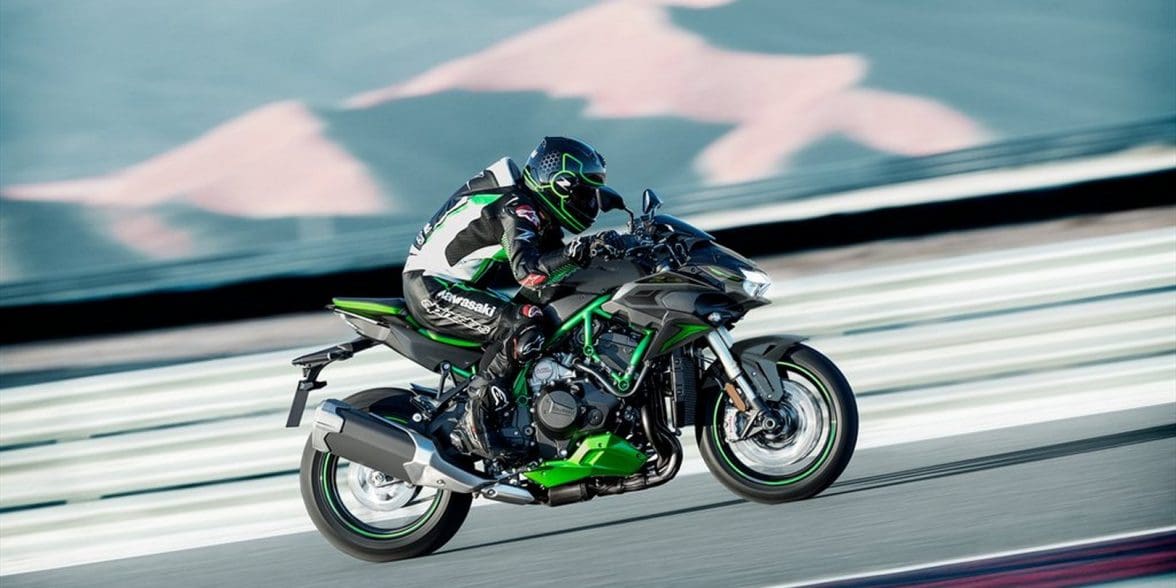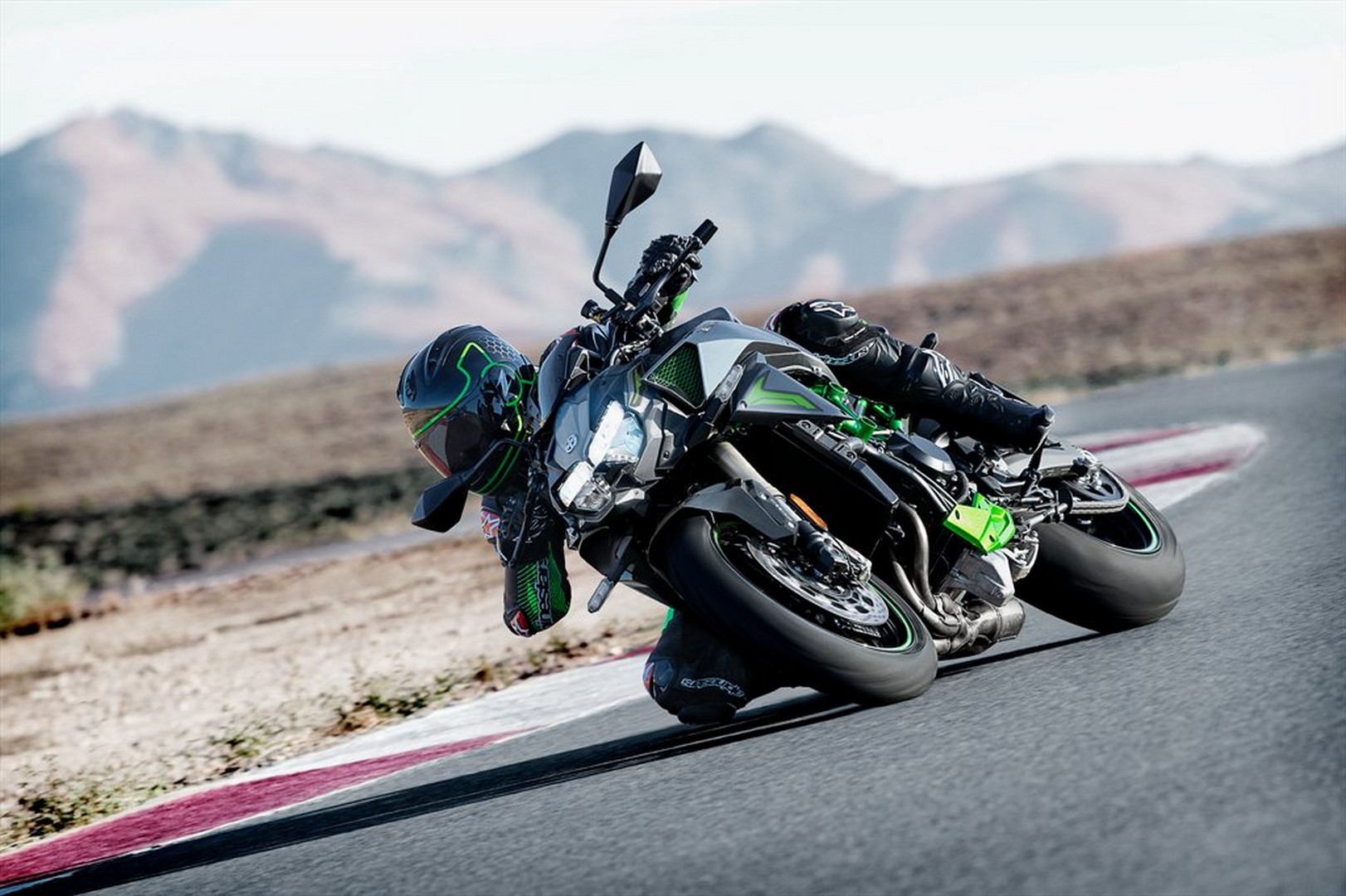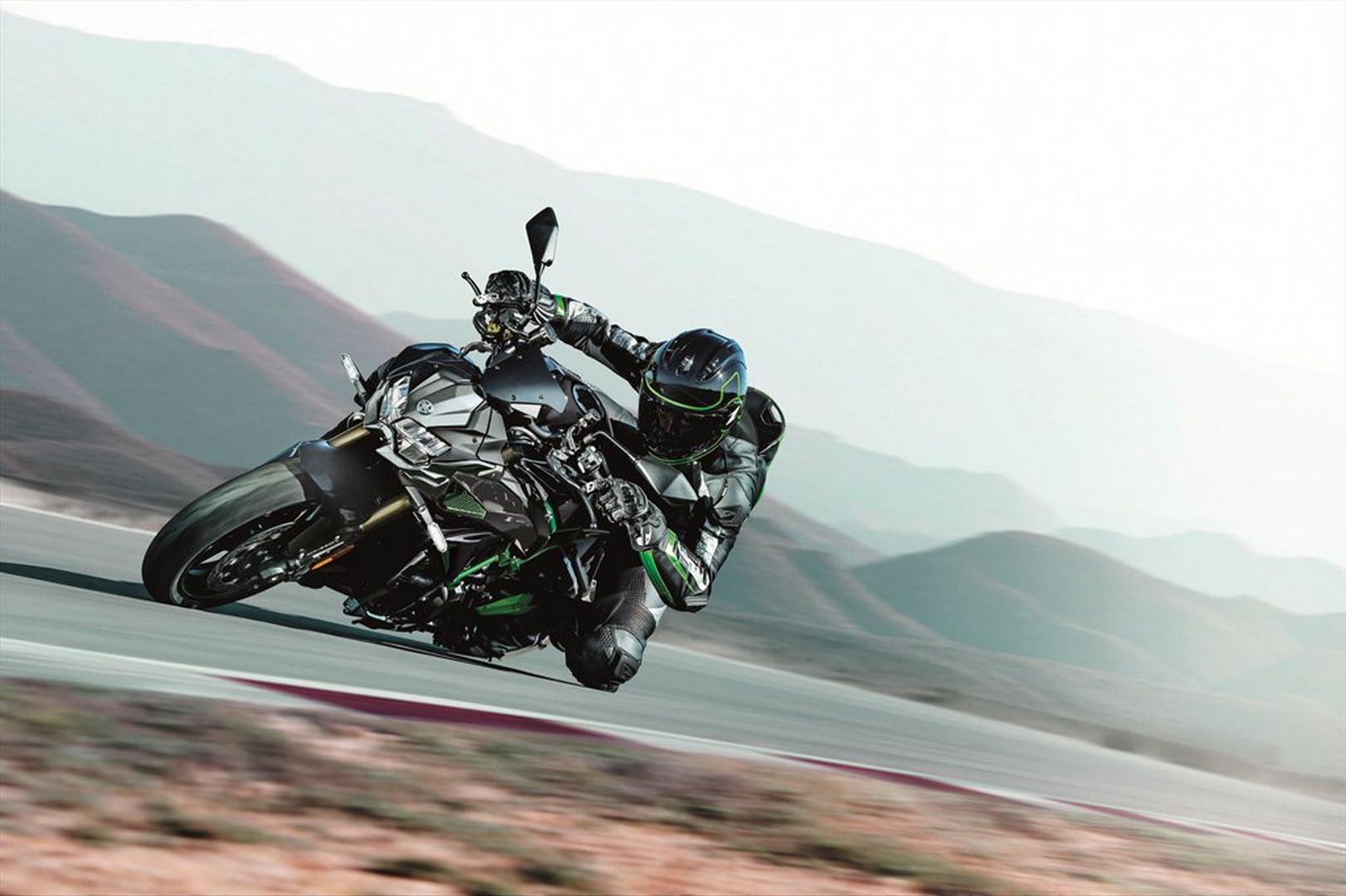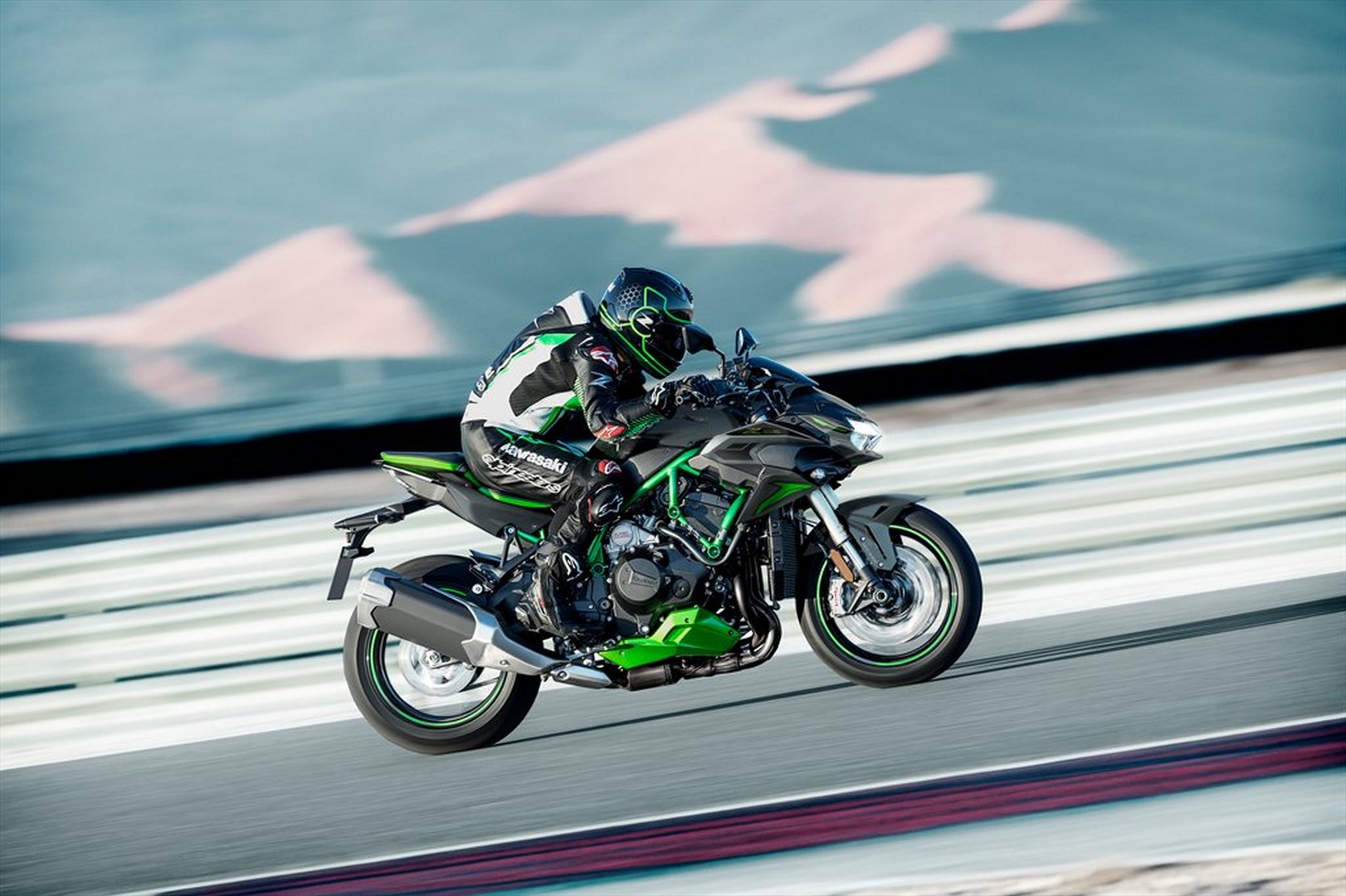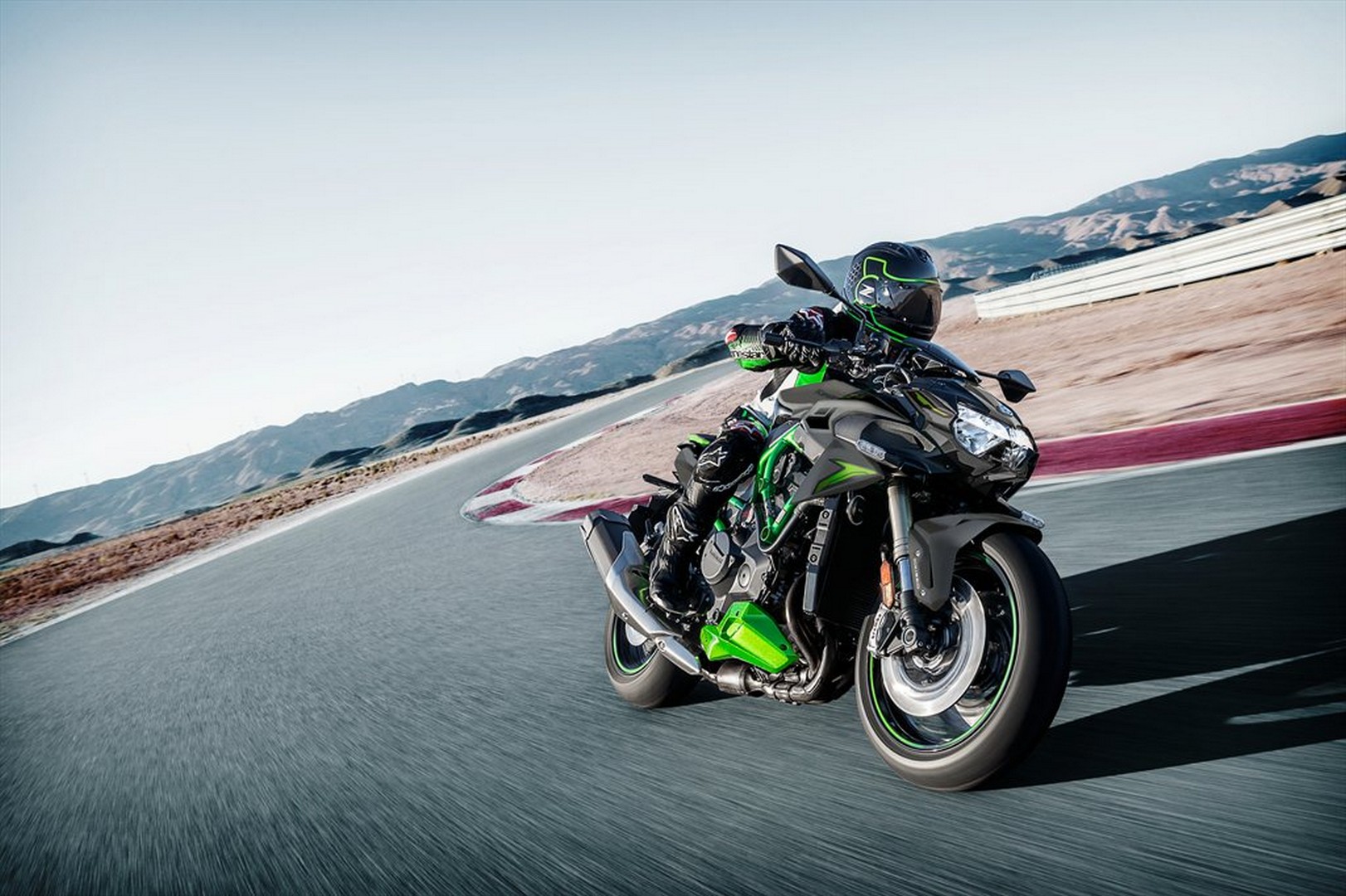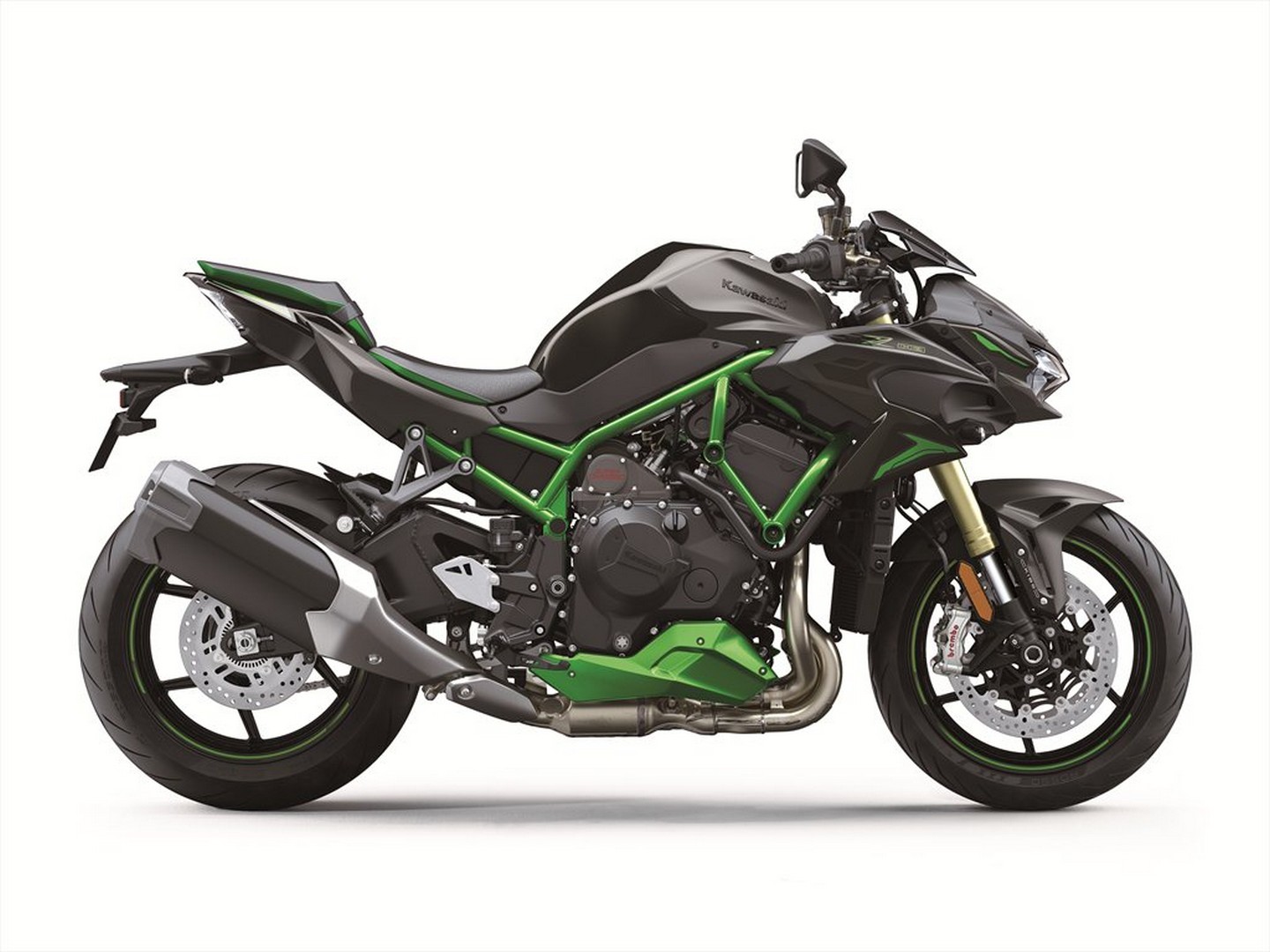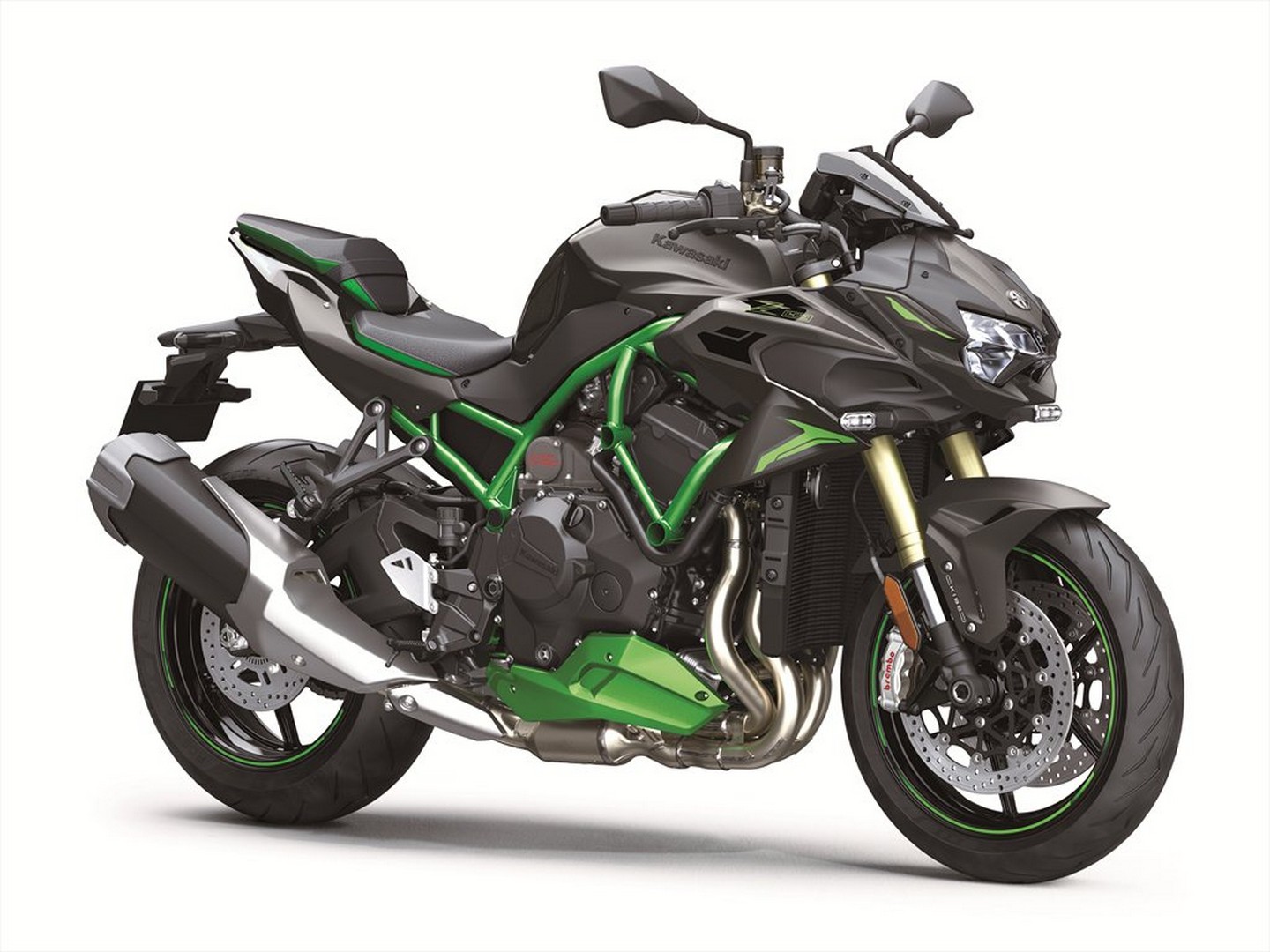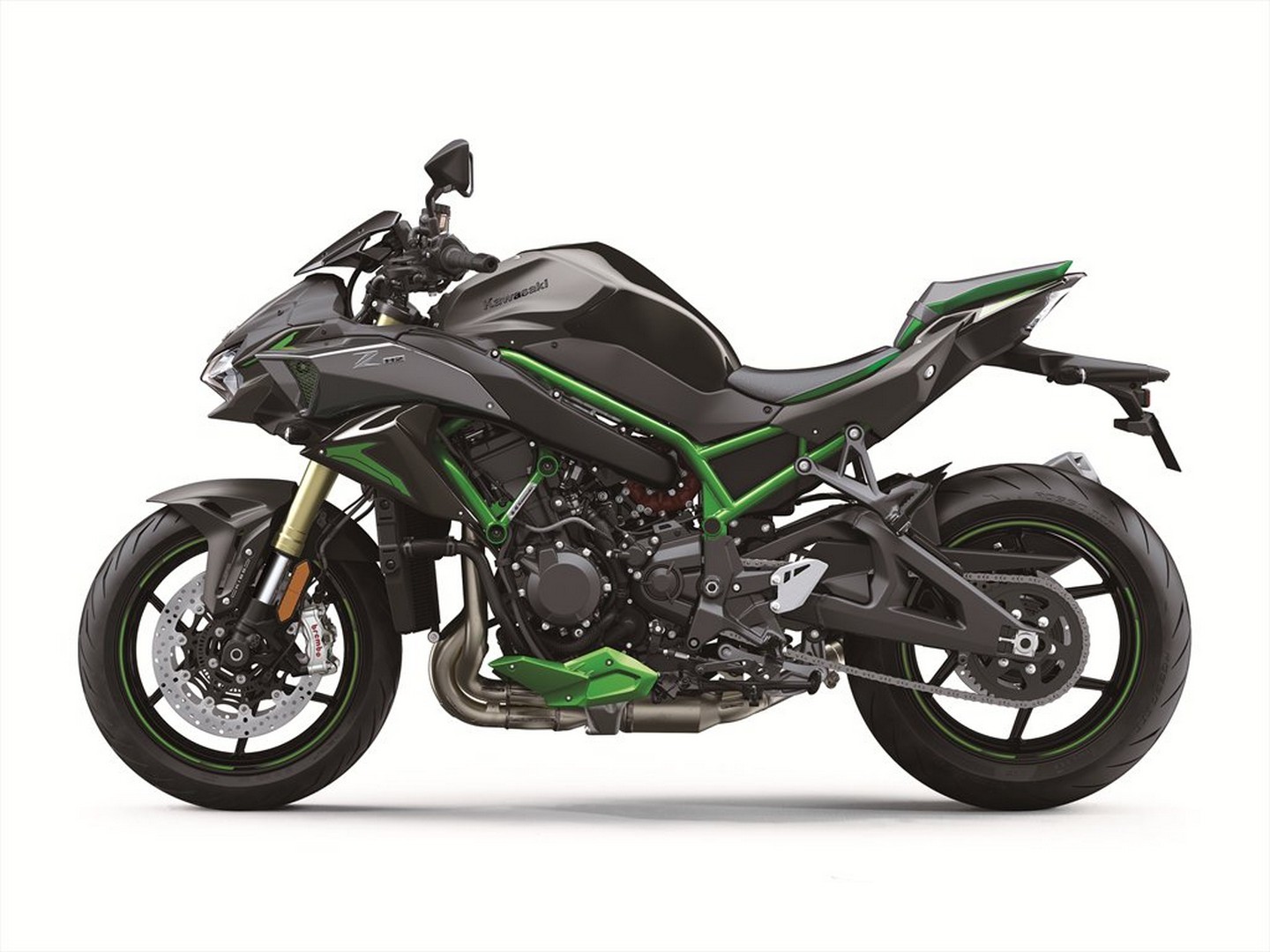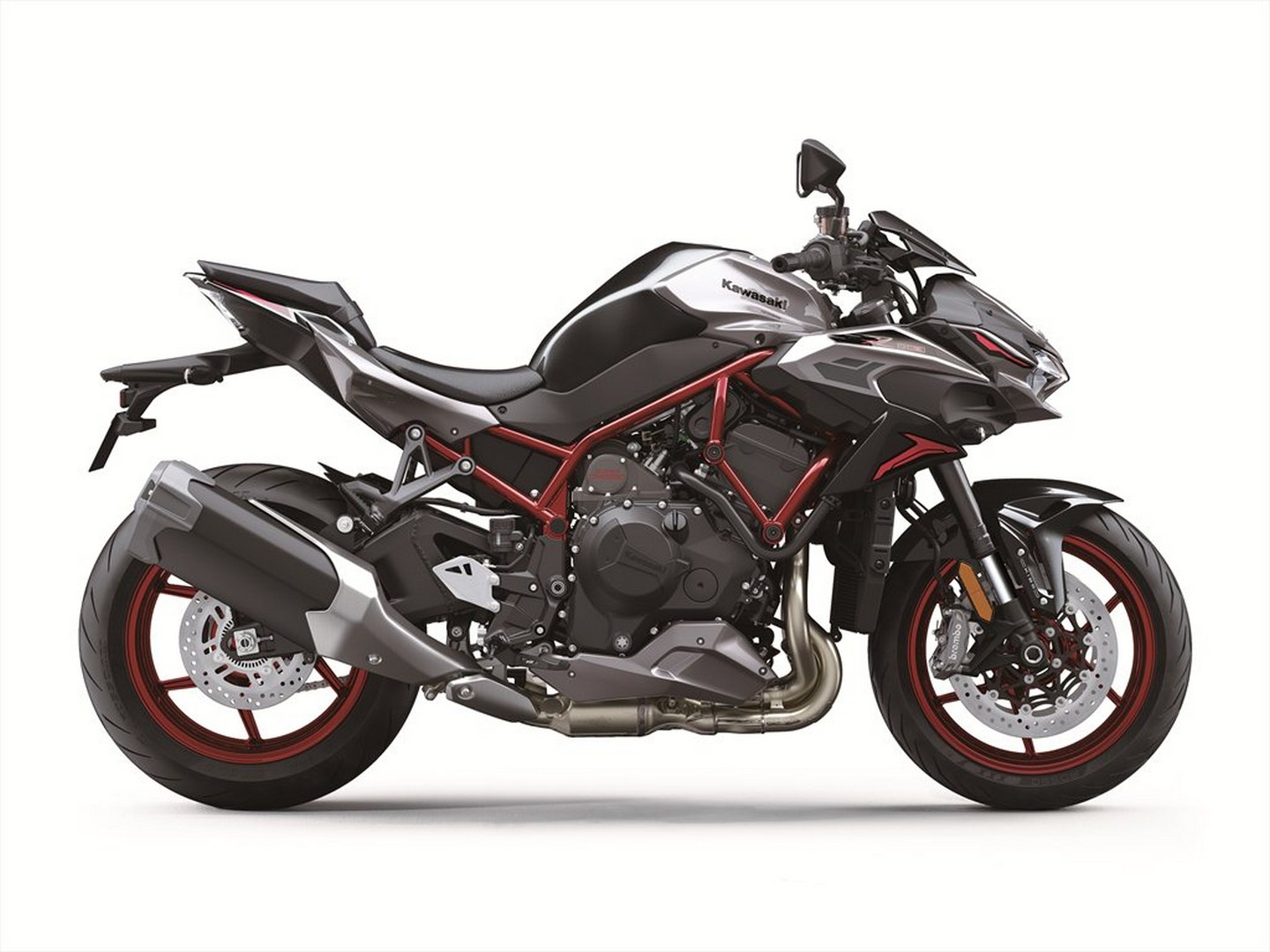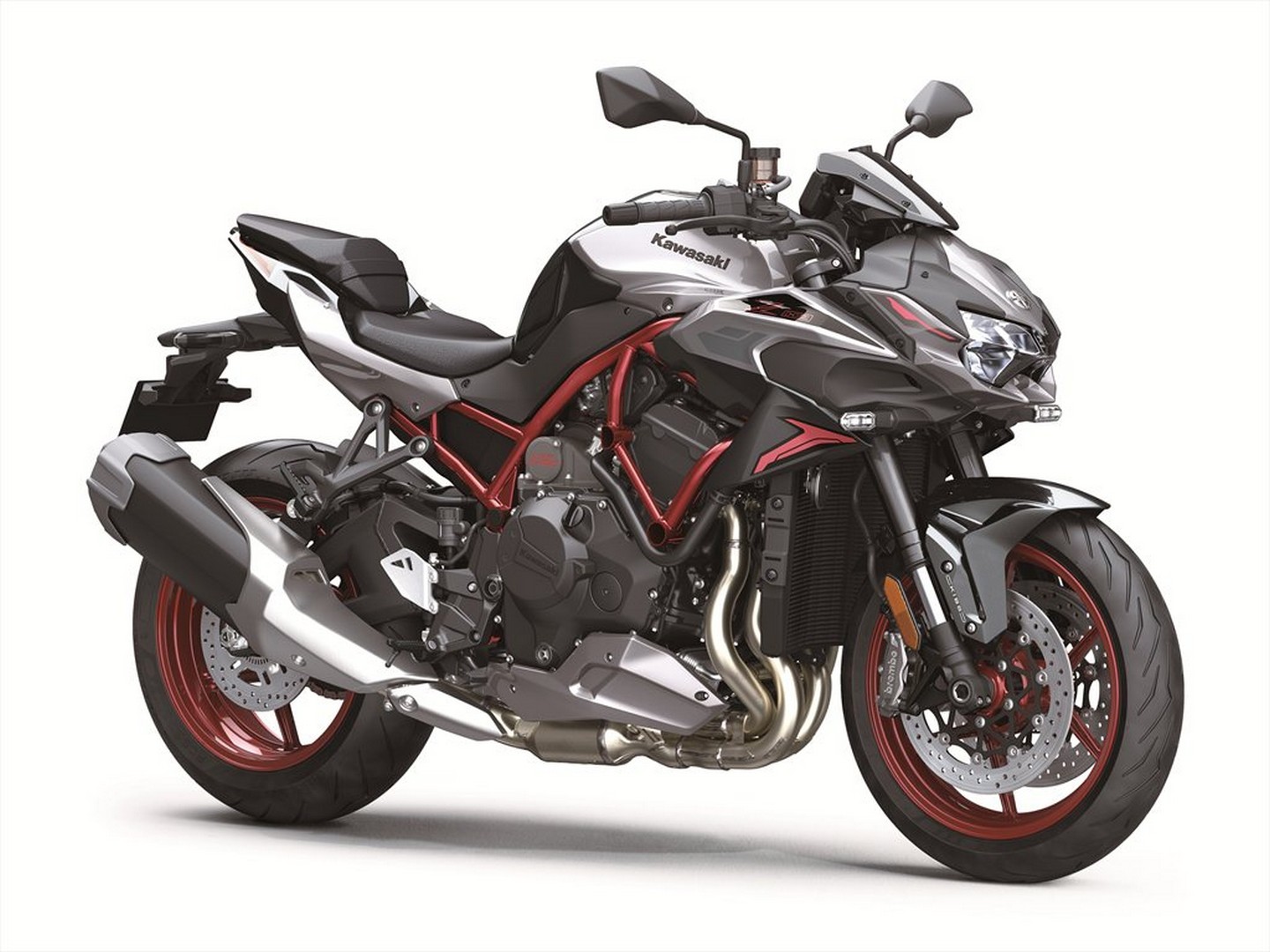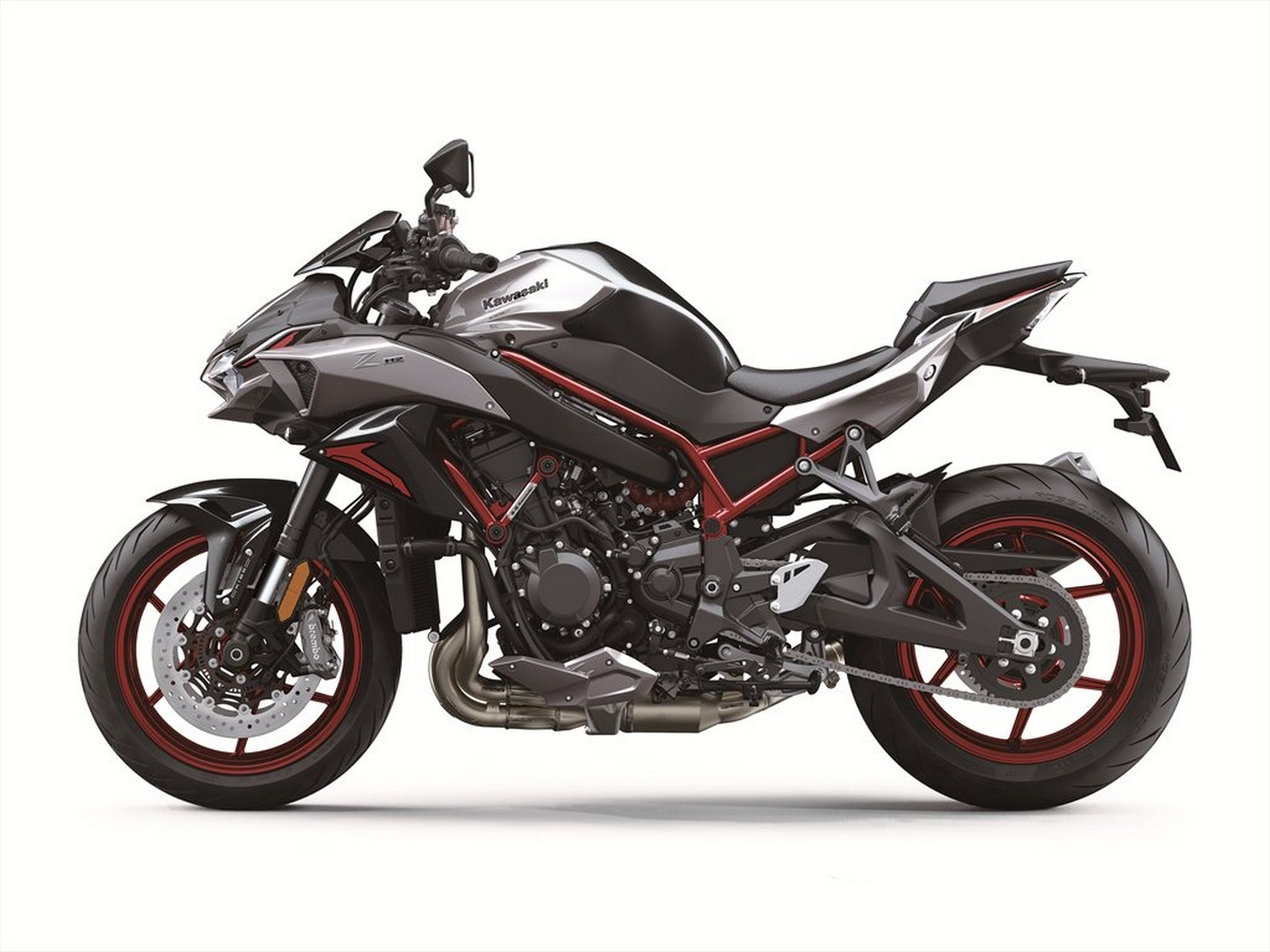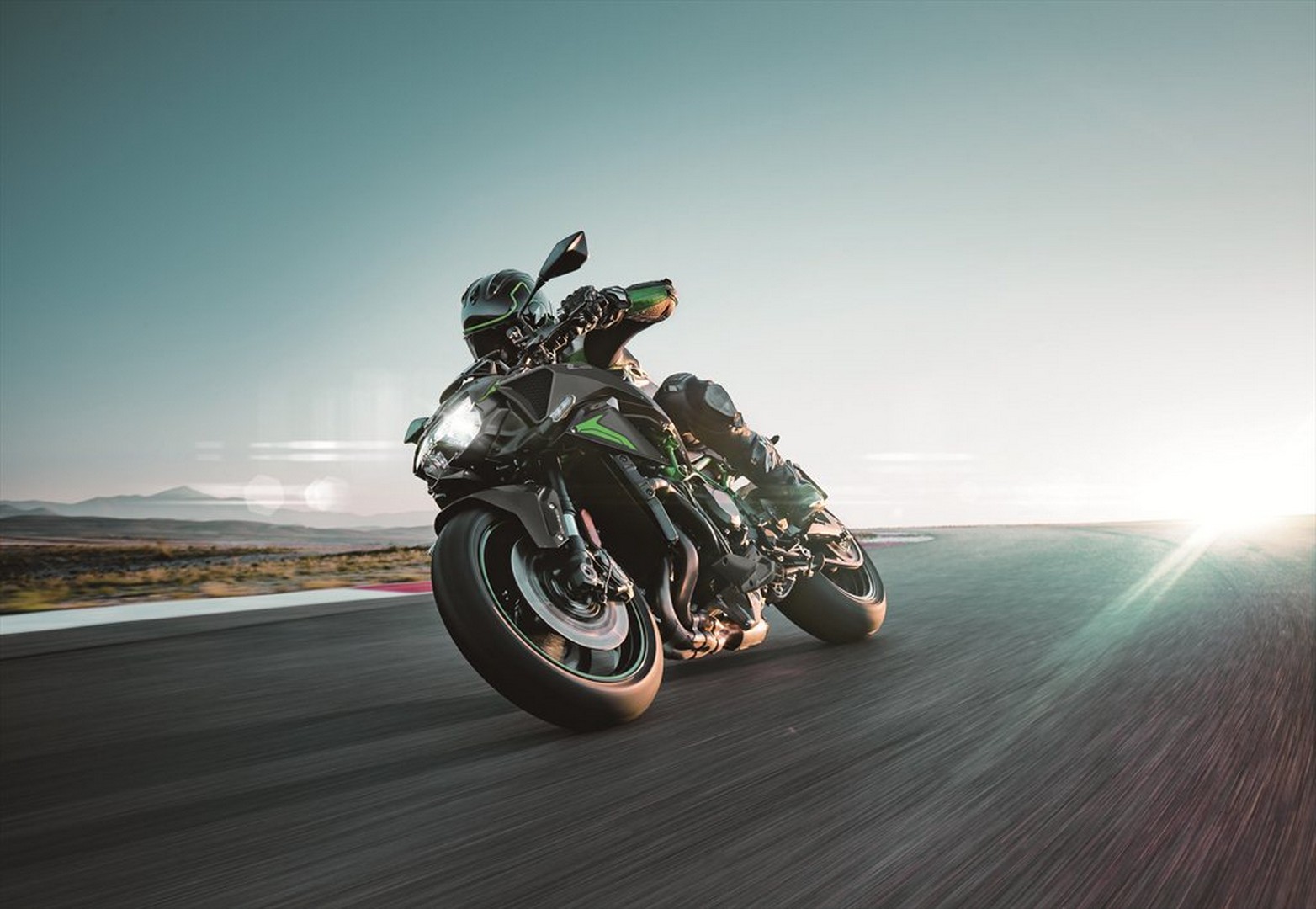2023 Kawasaki Z H2: A Masterpiece of Engineering and Performance
Contents
The 2023 Kawasaki Z H2 is the epitome of modern motorcycle design, blending cutting-edge technology with raw, unadulterated power. The Kawasaki motorcycle brand has been a pioneer in the world of two-wheeled performance, and the Z H2 is no exception. Barely contained in the trellis frame is a supercharged 998cc inline-four engine that delivers an astounding 197 horsepower and 101 lb-ft of torque which makes it one of the top performers in Kawasaki’s 2023 lineup. This engine, combined with a curb weight of just 529 pounds, offers an unmatched power-to-weight ratio, ensuring awesome acceleration and top speeds that can only be safely or legally experienced on a track.
The Z H2’s engine management system has been finely tuned for optimal performance, with advanced electronics and riders can choose from three selectable power modes to tailor the bike’s performance characteristics to the riders preference. The 2023 Z H2’s chassis is equally impressive, featuring a trellis frame crafted from high-tensile steel that offers both strength and agility. The fully adjustable suspension system, with Showa SFF-BP front forks and a Uni-Trak rear shock, ensures razor-sharp handling and a comfortable, stable ride.
The braking system on the 2023 Z H2 is impressive and would need to be, considering the bikes power. Kawasaki has included its top of the line Brembo monobloc front calipers and a Brembo master cylinder. Kawasaki has also incorporated state-of-the-art electronics into the Z H2, including a comprehensive suite of rider aids such as KIBS (Kawasaki Intelligent anti-lock Brake System), KTRC (Kawasaki Traction Control), and KCMF (Kawasaki Cornering Management Function). These advanced systems work together to provide an unparalleled level of control, allowing riders to push the limits of the Z H2’s performance without sacrificing safety.
Aesthetically, the 2023 Kawasaki Z H2 has aggressive styling, characterized by sharp lines and a bold, muscular stance, is undeniably eye-catching. The TFT color display offers a customizable interface, allowing riders to easily monitor essential information such as speed, gear position, and fuel level. As Kawasaki is known for, they have once again pushed the boundaries of engineering and performance and produced a bike that stands above most others in comparison to other Japanese brands.
The 2023 Kawasaki Z H2 starts at $18,500 USD/$23,899 CAD
On this page: we’ve curated specs, features, news, photos/videos, etc. so you can read up on the new 2023 Kawasaki Z H2 in one place.
Model Overview
General Info
- Price: $18,500 USD/$23,899 CAD
- Key Features:
-
- Brembo Calipers
- Launch Control
- Riding Modes
- TFT color instrumentation
Main Specs
- Engine: 998cc, liquid-cooled, 4-stroke, DOHC 16-valve in-line four
- Power: 197 horsepower
- Torque: 101 lb-ft
- Weight: 529 lbs (240 kgs)
- Seat Height: 32.7 inches (830 mm)
Competitors
2023 Kawasaki Z H2 Specifications
ENGINE |
||
| Engine | 998cc, liquid-cooled, 4-stroke, DOHC 16-valve in-line four | |
| Power | 197 hp | |
| Bore x Stroke | 76.0 x 55.0mm | |
| Compression Ratio |
11.2:1
|
|
| Fuel System | Fuel injection: ø40 mm x 4 | |
| Starter | Electric | |
| Lubrication | Forced lubrication, wet sump with oil cooler | |
DRIVETRAIN |
||
| Clutch | Wet multi-disc, manual | |
| Transmission | 6-speed, return, dog-ring | |
| Final Drive | Chain | |
CHASSIS |
||
| Suspension Front | ø43 mm inverted fork (SFF-CA) with KECS-controlled compression and rebound damping, manual spring preload adjustability, and top-out springs / 120 mm (4.7 in) | |
| Suspension Rear | New Uni Trak, BFRC lite gas-charged shock with piggyback reservoir, KECS-controlled compression and rebound damping, manual spring preload adjustability, and top-out spring / 134 mm (5.3 in) | |
| Brakes Front | Dual semi-floating ø320 mm discs with radial-mount, Brembo Stylema monobloc, opposed 4-piston calipers | |
| Brakes Rear |
ø260 mm disc with single-piston caliper
|
|
| Tires Front | 120/70ZR17M/C (58W) | |
| Tires Rear | 190/55ZR17M/C (75W) | |
| Fuel Tank Capacity | 19 litres | |
| Color | ||
ELECTRICAL |
||
| Ignition | Digital | |
| Spark Plugs | ||
| Headlight | LED | |
| Tail Light | LED | |
DIMENSIONS |
||
| Overall Length | 82.1 in | |
| Overall Width | 31.1 in | |
| Overall Height | 44.5 in | |
| Wheelbase | 57.3 in | |
| Ground Clearance | 5.5 in | |
| Seat Height | 32.7 in | |
| Curb Weight | 529 lb | |
WARRANTY |
||
| Warranty | 12 Month | |
| Kawasaki Protection Plus | 12 / 24 / 36 / 48 months | |
2023 Kawasaki Z H2 Features
Assist & Slipper Clutch
Under normal operation, the assist cam functions as a self-servo mechanism, pulling the clutch hub and operating plate together to compress the clutch plates. This allows the total clutch spring load to be reduced, resulting in a lighter clutch lever feel when operating the clutch.
When excessive engine braking occurs – as a result of quick downshifts (or an accidental downshift) – the slipper cam comes into play, forcing the clutch hub and operating plate apart. This relieves pressure on the clutch plates to reduce back-torque and helps prevent the rear tire from hopping and skidding. This race-style function is particularly useful when sport or track riding.
Economical Riding Indicator
While effective vehicle speed and engine speed may vary by model, paying attention to conditions that cause the “ECO” mark to appear can help riders improve their fuel efficiency – a handy way to increase cruising range. Further, keeping fuel consumption low also helps minimize negative impact on the environment.
Electronic Throttle Valves
Electronic throttle valves also enable more precise control of electronic engine management systems like S-KTRC and KTRC, and allow the implementation of electronic systems like KLCM, Kawasaki Engine Brake Control, and Electronic Cruise Control.
Electronic Cruise Control
KCMF (Kawasaki Cornering Management Function)
• S-KTRC/KTRC (including traction management and wheel lift management)
• KLCM (including traction management and wheel lift management)
– Designed to optimize acceleration from a stop
• KIBS (including pitching management and corner braking management)
• Kawasaki Engine Brake Control
KLCM (Kawasaki Launch Control Mode)
KQS (Kawasaki Quick Shifter)
KTRC (Kawasaki Traction Control)
Less intrusive modes maintain optimum traction during cornering. Designed with sport riding in mind, they facilitate acceleration out of corners by maximizing forward drive from the rear wheel. And because Kawasaki’s sophisticated software bases its dynamic analysis on the chassis’ orientation relative to the track surface (rather than relative to a horizontal plane), it is able to take into account corner camber, gradient, etc., and adapt accordingly.
In the more intrusive modes (and for some models, in any mode), when excessive wheel spin is detected, engine output is reduced to allow grip to be regained, effectively enabling riders to negotiate both short, slippery patches (train tracks or manhole covers) and extended stretches of bad roads (wet pavement, cobblestone, gravel) with confidence.
Models equipped with IMU incorporate chassis-orientation feedback to offer even more precise management.
POWER MODES
Smartphone Connectivity
Sound Tuning
Designed specifically to allow riders to enjoy their motorcycles aurally as well as physically, the carefully crafted auditory notes can be the key components of the street riding exhilaration offered by models that have benefitted from sound tuning. Sound tuning can include conducting sound research, designing intake and exhaust system components based on an acoustic test carried out in a sound room, and careful consideration of every detail of a system’s components to ensure a balance of performance and the desired sound.
Supercharged Engine
One of the greatest benefits of designing the supercharger in-house and tailoring its design to match the engine’s characteristics was that engineers were able to achieve high-efficiency operation over a wide range of conditions – something that would not have been possible by simply dropping in or trying to adapt an aftermarket automotive supercharger.
The importance of high efficiency in a supercharger is that, as the air is compressed, power-robbing heat gain is minimal. And while many superchargers are able to offer high-efficiency operation in a very limited range of conditions, the Kawasaki supercharger offers high efficiency over a wide range of pressure ratios and flow rates – meaning over a wide range of engine speeds and vehicle speeds. This wide range of efficient operation (similar to having a wide power band) easily translates to strong acceleration. The supercharger’s high efficiency and minimal heat gain also meant that an intercooler was unnecessary, greatly saving weight and space, and enabling the engine’s compact design.
ABS (Anti-lock Brake System)
2023 Kawasaki Z H2 Photos
2023 Kawasaki Z H2 Videos
2023 Kawasaki Z H2 review by MotoJitsu:
2023 Kawasaki Z H2 Review by Mr.Drakenhoff:
Links
Kawasaki Official Websites


